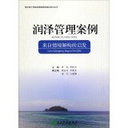Recombinant Osteopontin Improves Neurological Functional Recovery and Protects Against Apoptosis via PI3K/Akt/GSK-3β Pathway Following Intracerebral Hemorrhage.
Keywords
Abstract
BACKGROUND This study aimed to investigate the potential neuroprotective effect of recombinant osteopontin (r-OPN) on apoptotic changes via modulating phosphoinositide-3-kinase/Akt/glycogen synthase kinase 3 beta (PI3K/Akt/GSK-3β) signaling in a rat model of intracerebral hemorrhage (ICH). MATERIAL AND METHODS We subjected 10-12-week-old Sprague-Dawley male rats (n=120) to injection of autologous blood into the right basal ganglia to induce ICH or sham surgery. ICH animals received vehicle administration, r-OPN (4 μL/pup), or r-OPN combined with phosphatidylinositol 3-kinase (PI3K) inhibitor wortmannin (86 ng/pup) at 30 min after injury. Neurological scores and rotarod latencies were evaluated on days 1-5 post-ICH. Brain water content was evaluated on days 1-3 post-ICH. The number of apoptotic cells changes were evaluated by terminal deoxynucleotidyl transferase-mediated 2-deoxyuridine 5-triphosphate-biotin nick-end labeling (TUNEL) and hematoxylin staining. Apoptosis-related proteins Bcl-2, Bax, and cleaved caspase-3 (CC3), and the phosphorylation levels of Akt and GSK-3b were assayed by Western blot. RESULTS Neurological deficits, rotarod latencies, and brain water content following ICH were reduced in the r-OPN group compared to the vehicle group. r-OPN also attenuated cell death in ICH. Furthermore, treatment with r-OPN significantly increased p-Akt expression and decreased p-GSK-3β. These effects were associated with a decrease in the Bax/Bcl-2 ratio and the suppression of CC3 at 24 h after ICH. Importantly, all the beneficial effects of r-OPN in ICH were abrogated by the PI3K inhibitor wortmannin. CONCLUSIONS r-OPN may provide a wide range of neuroprotection by suppressing apoptosis through the PI3K/Akt/GSK-3β signaling pathway after ICH.


